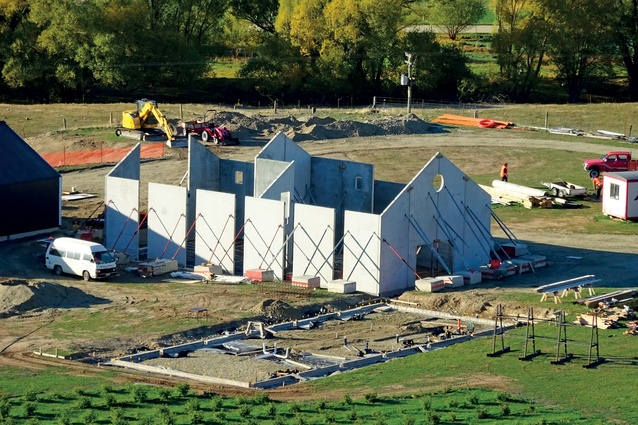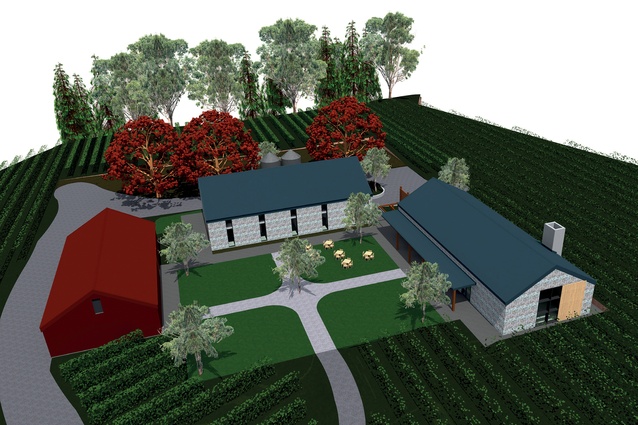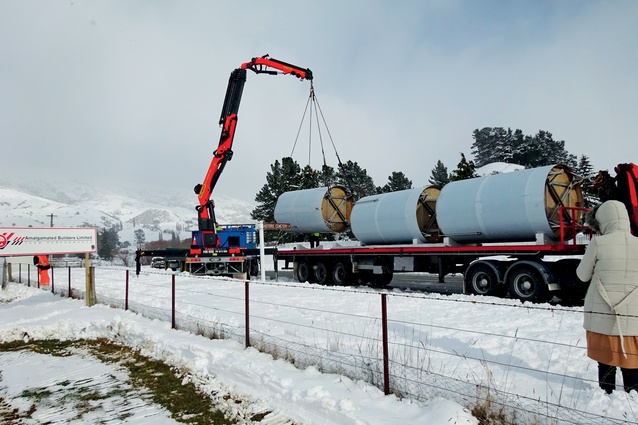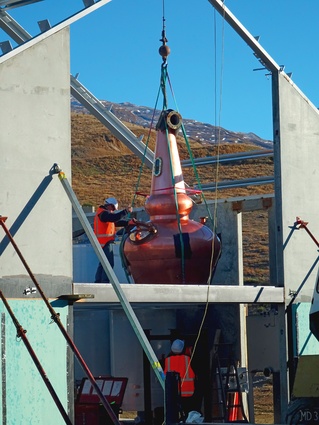A wee dram
A good whisky maturation process takes a mimimum of 10 years; requiring equal measures of patience, experience and dedication to purity. This project, an industrial-scale distillery in Otago called for all the same qualities from the client, construction company ABL, and architect Sarah Scott.
Located in the Cardrona Valley, near Wanaka, the more than 700m2 of floorspace within the 3.5ha site is made up of three pavilions – comprising the distillery, storage ‘barn’ and a museum – clustered around a central, north-facing courtyard.
The largest of the three buildings is clad in local schist and set just metres back from the Crown Range highway, near the entrance to Cardrona Alpine Resort; creating a prominent presence yet still keeping to the architectural vernacular common to the area. Its aesthetic charm belies the challenges involved in building a commercial distillery in the extreme weather conditions, says ABL area manager, Brett Squire.
“Coordinating the plant installation was an interesting task. The pre-cast panel walls had to be erected before the large copper stills, which were hand-made in Scotland, could be uplifted and put in place, prior to the roof being installed. There was quite a bit of coordination around that and no small amount of nervousness when it came to getting those stills over the walls,”says Squire.
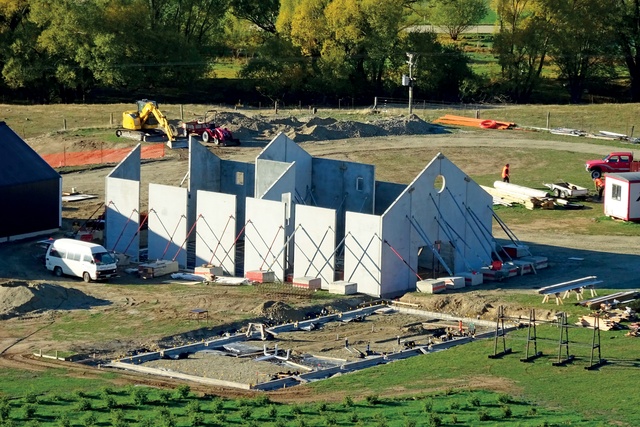
When, as Scott says, the entire design was based on the stills, one can see why. Roaring Meg and Gentle Annie, as the stills are called, were specially forged by traditional copper still makers, Forsyths. Each still holds between 1300 and 2000 litres of liquid, so the floor of the distillery needed to be re-inforced to handle the weight. The tun room, which is next to the still room, contains six stainless steel wash backs each with a working capacity of 7000 litres. The heat produced by the distilling process also factored into the building material choice.
While concrete was more suitable for the demands of the store and distillery, timber framing and gib was selected for the museum, which houses a café, shop and Cardrona Historical Trust’s memorabilia.
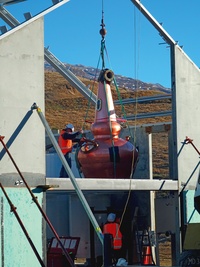
“There is significant insulation to this building in order to manage the cold weather,” says Squire. Scott adds that the orientation of the buildings captures sunlight in winter and shelters from the prevailing winds. The climate also affected decisions about underground construction, such as location of pipes to ensure they don’t burst in freezing conditions similar to those caused by the record-breaking lows experienced this year.
But it wasn’t just the extreme heights or temperatures that proved challenging. The amount of local Gibbston Valley and Tarras schist transported to and used onsite was epic, says Squire. “When we suggested cutting back on the schist for cost purposes, Desiree [Whitaker, the client] didn’t agree. It was good she didn’t, because the stone really makes the building. That schist will naturally weather, adding to the overall character.”
Both Squire and Scott agree that it was a personal and wonderful project to be involved with, because of the vision of the client and the promise of the actual product. So although the build team will have to wait 10 years to literally taste the outcome of their work, the wait will be worth it. While the whisky matures, the roses around the buildings will fill out, the schist will weather naturally and the building will start to nestle into its surroundings, just in time for the first dram to be tasted.
But long after that, the Cardrona Distillery and Museum will be a legacy for the Whitakers, a testament to the men and women involved in its construction and a worthy addition to the tourism and natural landscape of the area.


